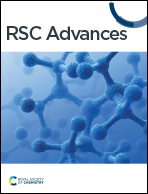Experimental investigation of the dehumidification and decarburization performance of metal–organic frameworks in solid adsorption air conditioning
Abstract
Solid adsorption air conditioning systems use solid adsorption materials to co-adsorb water vapor and carbon dioxide, allowing the humidity and carbon dioxide concentration in the air-conditioned room to be controlled. Exploring the co-adsorption mechanism of H2O and CO2 is essential for the screening of adsorbent materials, system design, and system optimization in solid adsorption air conditioning systems. A fixed-bed adsorption–desorption device was built, and the dynamic adsorption properties of three MIL adsorbent materials MIL-101(Cr), MIL-101(Fe), and MIL-100(Fe) for co-adsorption of H2O and CO2 were studied. The results showed that all three MIL adsorbent materials are capable of performing co-adsorption of H2O and CO2 and meet the requirements of solid adsorption air conditioning systems. MIL-101(Cr) is recommended for solid adsorption air conditioners where dehumidification is the main focus, while MIL-100(Fe) is recommended for solid adsorption air conditioners where carbon removal is the main focus.



 Please wait while we load your content...
Please wait while we load your content...